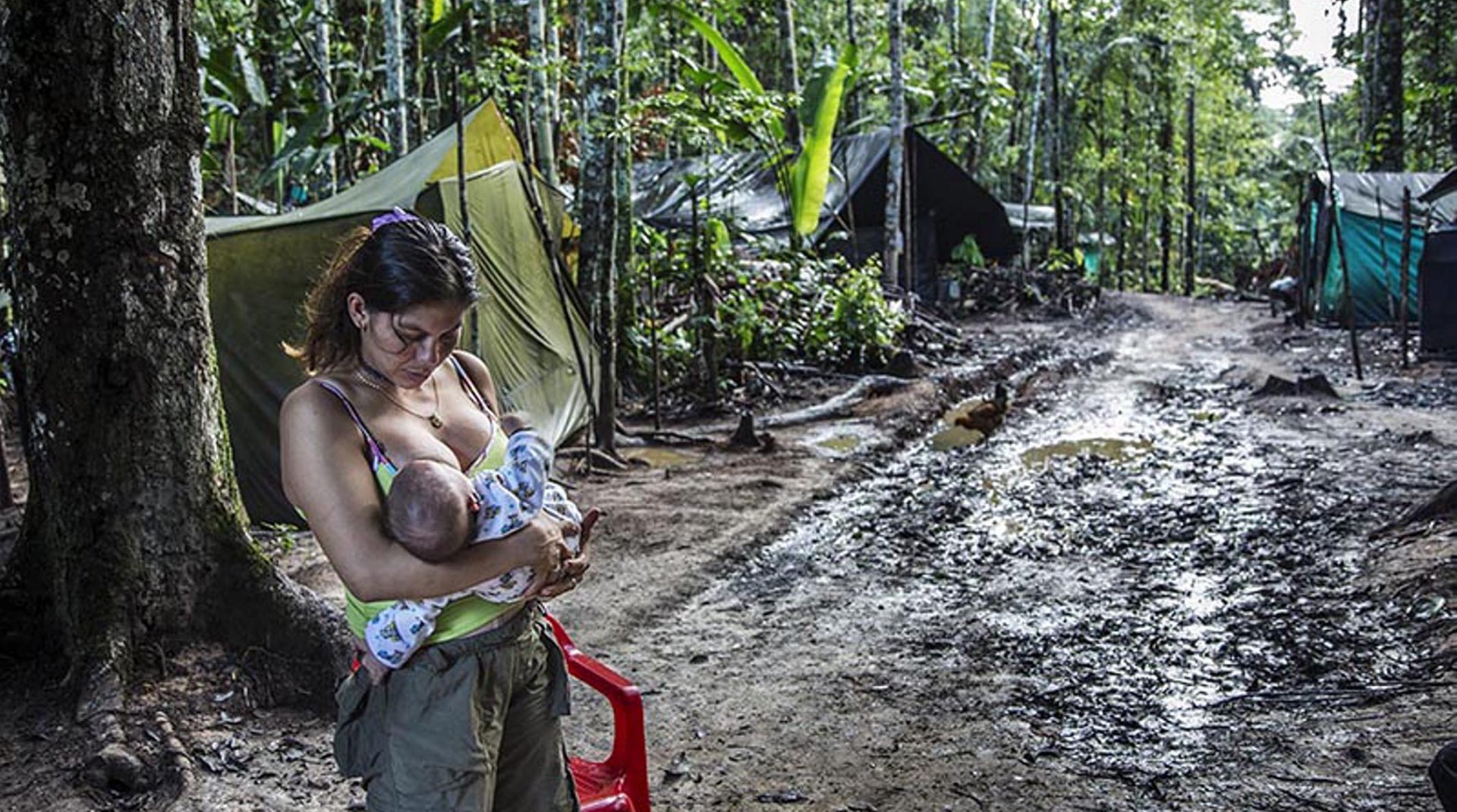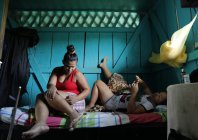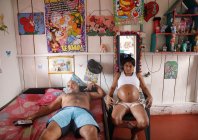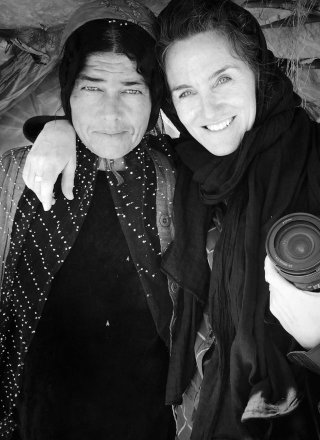
Colombia: (Re)Birth
Catalina Martin-Chico
Cosmos
Winner of the 2017 Canon Female Photojournalist Award
The conflict had been going on for so long, it was almost part of the scenery. FARC guerrilla forces had a toll of 260,000 dead, seven million displaced, and tens of thousands missing. The peace agreement, signed in August 2016, put an end to more than half a century of violence.
Colombia then discovered a completely unknown aspect of life for the female fighters with the Marxist rebels; and it has been estimated that women accounted for nearly 40% of the FARC Revolutionary Armed Forces of Colombia. During the 53 years the guerrilla warfare was waged, there was a ban on child-bearing, and any pregnancy that did occur had to be terminated, or any babies born had to be abandoned at birth. Since the signing of the peace agreement, hundreds of these young women have now chosen to bring life into the world. For Colombia, this is “the jungle baby boom.”
Colombia, 2017. Catalina Martin-Chico was able to cover the everyday life of these men and women who had not yet laid down their arms but were waiting to return to ordinary civilian society. The ex-FARC fighters were still in a transit area then, learning the hard way about making the transition to mainstream society.
Preview



Colombia again, 2018. What were just camps the previous year now looked like ordinary villages. A few people were still wearing camouflage gear, but they had dropped their noms de guerre and gone back to the names given to them at birth and which had been banned for so long. There was a new impetus, and the women finally reestablished contact with the families they had not been allowed to see for reasons of security. All these men and women had yearned to find their relatives and loved ones, and they had to learn how to live as a group in society all over again. They all had one obsession, and that was the future, and finding their place in the society they had turned their back on for so many years. They knew that the allowance which the government paid to fighters who had laid down their arms was for the transition period, and that no payment would be made after the summer of 2019.
Former members of the FARC were free again, but they have only a few more months to learn how to pick up the thread of everyday life, how to get used to ordinary living, after years surviving in a totally self-sufficient environment. The new life was unknown, even frightening, but it had to be planned.
Today, some of the young mothers have left the transition camps to live with their parents; others have chosen to settle in rural areas and to farm. They too have sometimes shown daring; and a rare few have decided to go it alone, starting from scratch, just two adults together, often forced to disguise their identity while living in cities nearby.
The wound runs deep, carved out through more than fifty years of violence, and it is only just healing. The political climate is still volatile, and there seems to be little faith in it, yet Colombia has started, cautiously, to believe in its rebirth.
Auberi Edler, May 2018
Special thanks to: Luz Amparo Ramirez, Mathilde Brochard, Diego Carrero, Magdalena Herrera, and Elisa Mignot.



